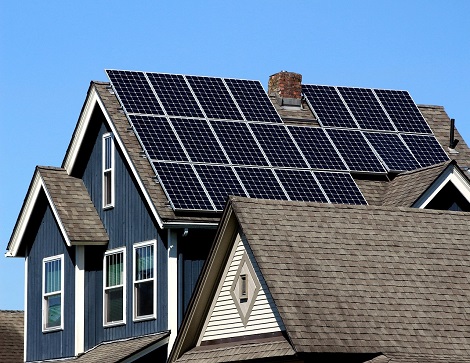Zero-Energy Buildings: How Sustainable Architecture Makes It Possible
 Rethinking Energy Use in Modern Spaces
Rethinking Energy Use in Modern Spaces
In an era where climate change and rising energy demands intersect, a new approach to construction is reshaping how buildings interact with the environment. Zero-energy buildings—structures that produce as much energy as they consume annually—offer a compelling response. Rather than relying on traditional grids for power, these buildings merge design ingenuity with cutting-edge systems to achieve energy balance. Their impact goes far beyond reduced utility bills; they represent a meaningful step toward reducing ecological impact.
Harnessing Design for Energy Efficiency
The foundation of a zero-energy structure starts long before any concrete is poured. Sustainable architecture plays a pivotal role during the planning stage. Every aspect—from window placement to material selection—is guided by an intent to minimize waste and maximize environmental harmony. Rather than treating energy systems as an afterthought, architects bake them into the design process itself. This seamless integration allows energy performance to be optimized before the first solar panel is even installed.
Building Orientation as a Passive Strategy
Turning a building to face the right way isn’t just about aesthetics. South-facing façades (in the northern hemisphere) receive more sunlight during winter and less during summer, reducing the burden on heating and cooling systems. Roof angles are calculated to capture peak sunlight, while overhangs and shading devices prevent overheating during warmer months. These small shifts in placement create a substantial reduction in artificial energy reliance over time.
Insulation: Invisible but Essential
Hidden behind walls and beneath floors, insulation forms the unsung backbone of a zero-energy building. By reducing temperature fluctuations, high-performance insulation materials like mineral wool or rigid foam panels maintain indoor comfort with minimal intervention. What might seem mundane is, in fact, one of the most crucial contributors to keeping energy consumption near zero.
Air-Tightness and Ventilation Balance
Controlling air leaks is critical for energy efficiency, but sealing a space too tightly brings its own challenges. The solution lies in controlled ventilation systems—like heat recovery ventilators—that expel stale air while capturing the warmth to temper fresh incoming air. This ensures that indoor spaces remain healthy without compromising thermal stability. Carefully balanced airflow is a hallmark of genuinely efficient buildings.
Solar Energy as a Powerhouse
Photovoltaic panels serve as the most visible symbols of a building’s energy strategy. Positioned with precision, they capture sunlight to offset electricity use across the year. Advances in battery storage allow energy collected during daylight hours to be used after sunset, pushing homes and commercial structures closer to total self-sufficiency. No longer just rooftop accessories, these systems are integral to the structure’s performance.
Energy-Efficient Systems and Appliances
Beyond the envelope of the building, the systems operating within it hold significant weight. Heat pumps, induction cooktops, and LED lighting reduce overall demand. Appliances are chosen for their minimal energy draw and ability to integrate with smart management systems. Together, these tools reduce peak consumption and stretch the building’s renewable output further.
Materials That Matter
Choosing the right construction materials influences not just energy performance but the carbon footprint of the building itself. Recycled steel, reclaimed wood, and low embodied energy concrete alternatives contribute to the sustainability equation. These materials often perform as well as traditional ones, with the added benefit of reducing long-term environmental impact.
Continuous Monitoring and Smart Adjustments
Installing smart energy meters and automation systems allows real-time tracking and optimization. Occupants can adjust lighting, temperature, or appliance use based on actual performance data. This feedback loop transforms a static structure into an adaptive environment that responds daily to its energy profile.
The Future Built Today
Zero-energy buildings may have once seemed aspirational, but they’re increasingly becoming a practical reality. By harmonizing orientation, insulation, renewable generation, and efficient systems, both homes and commercial spaces can reach the remarkable milestone of energy neutrality. Far from a futuristic dream, this is the architecture of the present—cleaner, smarter, and purposefully designed for a sustainable tomorrow.